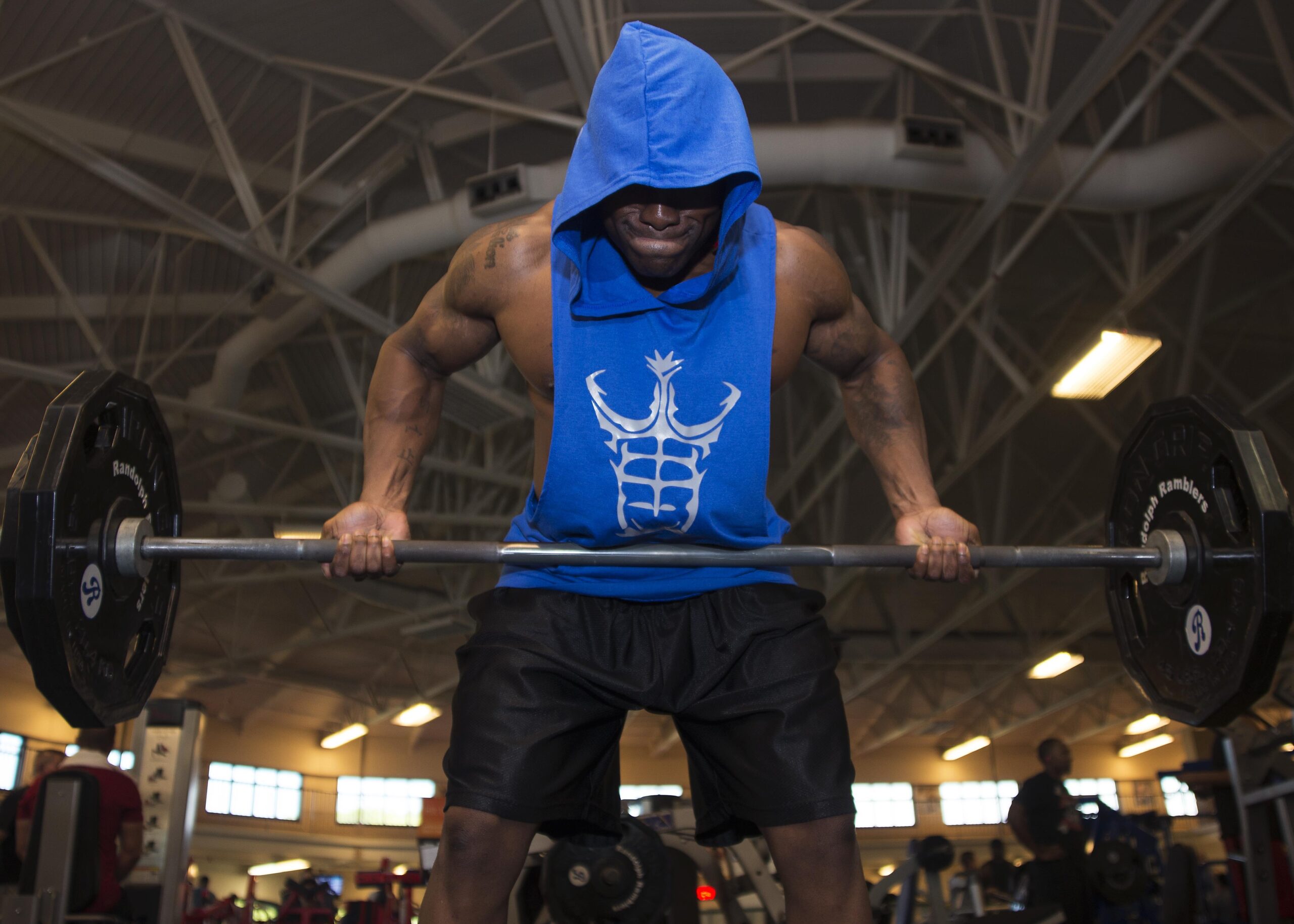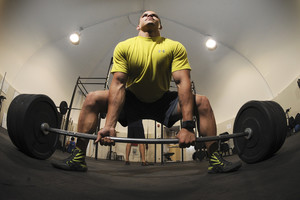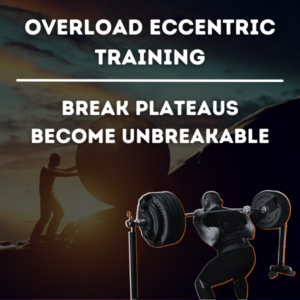Push Pull Legs – Heralded as one of the most effective and reliable methods of packing on size and strength – is this method of training as good as people claim?
It’s time to dig a little deeper and come to a verdict on whether this training method is right for you.
Set the Scene
Unsure of where to turn to? Many people have the desire and motivation to pursue physical fitness. They are willing to put in the time, effort and sacrifice to achieve what they want to achieve…But, where do they start?
If you’re not a beginner to strength training, runner, or looking for utilising weight training for weight loss – you may belong to the camp of relatively experienced trainees.
What program is best for you?
Now, it goes without saying that getting a qualified, experienced coach is always going to be the most optimal – it allows for personalised progression and manipulating your training as you continue to move forward; and yet it’s not always the most viable.
As a result, there are several program templates and methods of structuring your training out there – some of which are incredibly effective and others that aren’t worth your time.
The Push, Pull Legs Training Split is somewhere in the mix.
Incredibly effective for some…and relatively useless for others.
Time to find out if Push Pull Legs is for you…
Chapter One – The Ultimate Split?
WHAT?
Learn the topic.
The Push Pull Legs Split
The Push Pull Legs training routine is relatively simple and nature.
It essentially refers to a rotating training plan that goes as follows:
TRAINING DAY | EXERCISES |
|---|---|
Push | Exercises that involve your "pushing" muscles: Chest, Shoulders, Triceps |
Pull | Exercises that involve your "pulling" muscles: Lats, Traps, (Pretty Much your whole back), Biceps |
Legs | Lower Body Exercises |
Keeping this basic structure, you would continue to rotate them indefinitely, never training legs back to back – each session is seperated by the two that go before it.
Benefits
What are the benefits to the Push Pull Legs Split?
Well, there are quite a few.
To start with, it’s an incredibly simple, reliable structure of training to follow. It’s easy to become a victim of unnecessarily overcomplicating training and, in the pursuit of the optimal, losing sight of what the goal actually is – progressively overloading movements.
Following this method of training allows you to stick (or return to) the basics of focusing on progression and avoiding the hubbub of everything else.
It's easy to become a victim of unnecessarily over-complicating training and, in the pursuit of the optimal, losing sight of what the goal actually is - progressively overloading movements.
The 2nd benefit is that the system is based primarily on movements as oppose to specific exercises. This results in two things:
- Compound exercises over Isolation. You’d be amazed at how simply stating the type of action you’re performing changes the exercises people tend to select.
- Variation. Training variation is a great way to keep mixing things up, whilst still sticking to a similar structure. If you decide one week to do a bent over row and then a few weeks later you want to do a pendlay row. It’s a subtle enough difference to feel like you’re doing something new, but still belongs to the category of “pull”.
Another benefit that can’t be ignored, is the vast majority of anecdotal evidence we have on this training routine. The Push Pull Legs Split is used the world over as a consistently effective method of structuring training. From beginners, to the most advanced lifters and strongest people you will meet, it’s not uncommon to see the Push Pull Legs method in action.
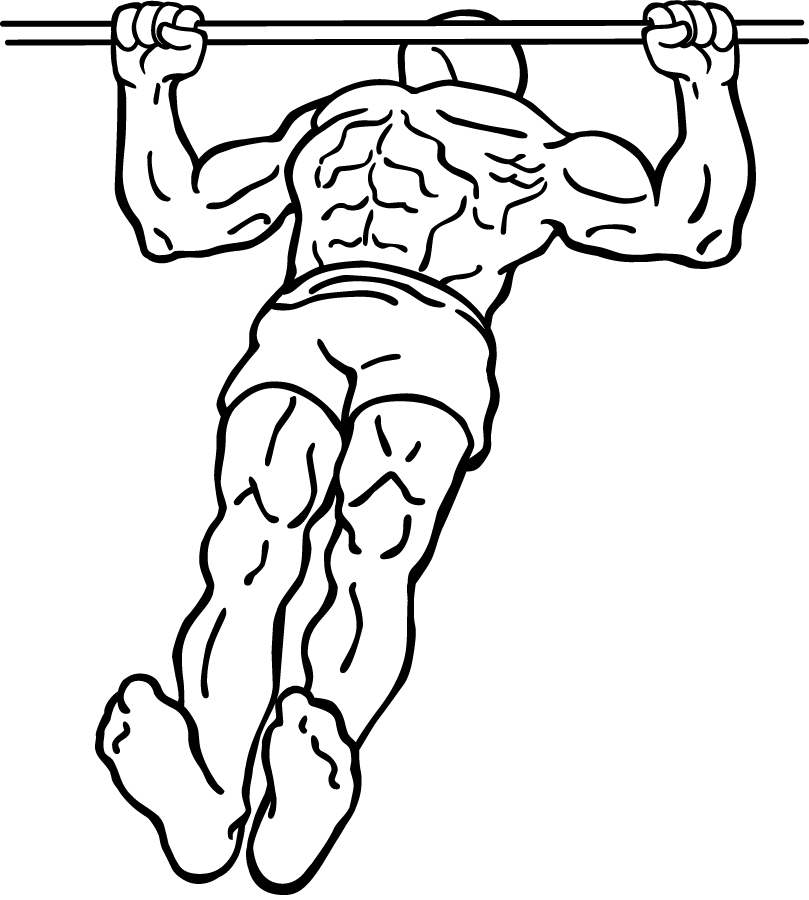
Drawbacks
What Exercise Goes Where?
Many people argue that this type of training is so effective, as it limits the overlap between muscle groups, between exercises. For example, if you’re working your biceps on Monday, and then bent over rows on Tuesday, you’re not allowing your biceps to fully recover. Whilst this makes complete sense, it depends entirely upon your exercise selection and where you deem exercises belong.
Let’s take the almighty Deadlift – the King of Strength.
There are so many muscle groups working at one time, that many people still dispute where this exercise belongs. Is it for your back? Or your legs?
Whilst this largely depends on your individual style, the fact remains – sticking to the structure of Push Pull Legs will ultimately limit your exercise selection, if you’re wanting to avoid exercises overlapping one another.
Lack of Frequency
Continuing from the point above, the Push Pull Legs split has one major downside – it’s lack of training frequency.
Lets take Session 1 – Push as an example.
You write out a training plan (or follow the one laid out below) and can’t wait to start working on it. You enter the gym and hammer all your pushing muscles, from every angle possible until you can hardly move your arms or shoulders.
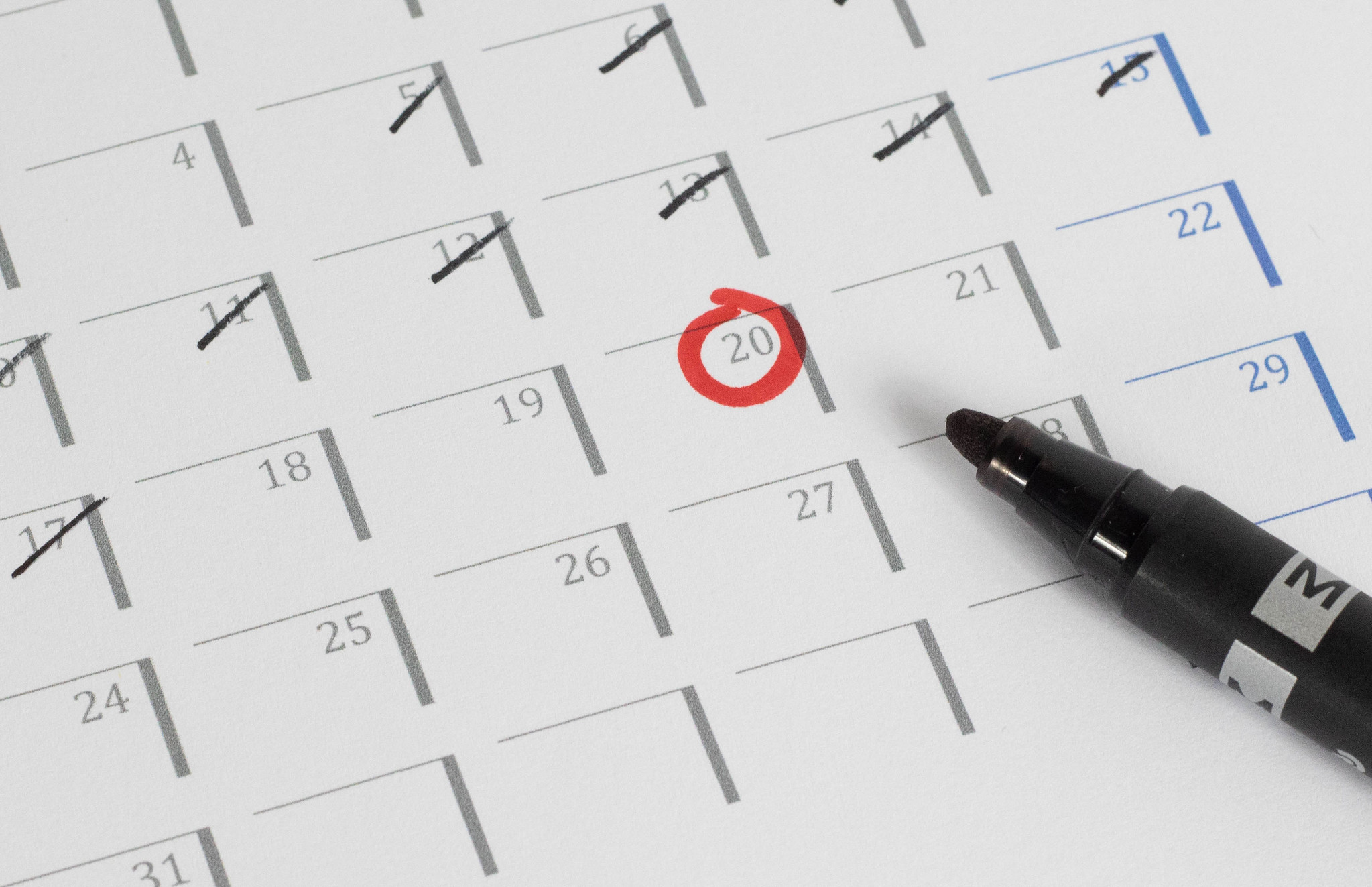
You get a buzz from it. And then you remember…you have to wait until next week before you can touch them again.
Now before we go any further. Yes. You can train more than 3x per week on this program. You can quite comfortably perform each session 2x per week, totalling for 6 days of training.
Conversely, you can train 4x per week – so long as you remember that each week will present a different order.
Week 1 – Push, Pull, Legs, Push
Week 2 – Pull, Legs, Push, Pull
Week 3 – Legs, Push, Pull, Legs
However, this will depend entirely upon your degree of flexibility and the time you can dedicate to your training.
Remember, logistics is one of the factors of individuality when it comes to training – If you can’t train more than 3x per week, you’re stuck with a 7 day waiting period before you get to train your pushing muscles again.
Less Optimal For Women
This is a particular problem for women who lift. Women have been shown basis to recover much faster between training sessions when compared to men (8).
As a result, achieving optimal progress as a female trainee, often requires training at slightly higher frequencies (6) and hitting certain muscle groups on a more regular basis in the gym.
Therefore, unless as a woman, you are able to commit 4-6x per week of training days, the Push Pull Legs Split method isn’t going to be nearly as effective as a higher frequency training approach in which overlap occurs within each session (such as a full body routine).

Achieving optimal progress as a female trainee, often requires training at slightly higher frequencies - hitting the same muscle group on a more regular basis throughout the week.
Balls Out
Due to the reduced training frequency and simply the focus on one particular area – it’s not uncommon to see the Push Pull Legs Split take on a spirit of it’s own and encourage the “Obliteration mentality” – training to failure on every set and trying to annihilate the muscle on every exercise.
Although this type of training has a time and a place for some of the crowd – for most it’s ineffective and doesn’t result in long term success – only injury and suboptimal progress. In the cases where the training to failure mentality is necessary, some trainees may not understand when training to failure is beneficial and how to read their bodies to know when to pull back.
If you’re only focusing on that one particular area for an entire workout…I completely understand why most people fall into that trap.
However, unless you’re relatively well versed in listening to your body and are aware of what you’re safety limit is – completely obliterating a muscle group within an inch of it’s life may not be the way to go.
Chapter Two – Science Behind Push Pull Legs
WHY?
Learn the science and theory.
Why is it Effective?
Active Recovery
One of the most effective aspects of any training program isn’t necessarily the overload you place on the body, but the amount of recovery that is capable of occuring to provide adaptation.
Remember, you don't get stronger in the gym when you're training, you get stronger out of it when you recover.
Not only do you get a sufficient amount of time to allow for recovery, but you also aid recovery by working opposing muscle groups and by promoting overall blood flow throughout the body.
This is often referred to, particularly in the scientific community, as active recovery.
Now, there is research to suggest that active recovery is superior to passive recovery (sitting still doing nothing). This is due to active recovery encouraging “fresh” bloodflow to the area, removing lactic acid that is sat chillin’ in the tissue in the process, which is causing a large portion of your DOMS (2, 4, 10, 16).
However, there is still a debate as to whether it’s worth your time and whether it will improve your performance, as some believe it may interfere with the restorative process (such as replenishing the glycogen stores within the muscle).
This is primarily due to one thing: It’s undecided as to what the cause of DOMS actually is.
Some orginally thought the soreness primarily occurred from muscle damage, the breakdown/tearing of muscle fibres that causes soreness (7, 11), others thought it was the accumulation of lactic acid (1, 5) and now, others think the increase in osmotic pressure (i.e. the fluid in the muscle tissue) disrupts the structure of the cytoskeleton (little scaffolding that upholds the structure of a muscle cell), causing swelling and a recuperative process to begin (3).
Regardless of the mechanism, one thing is certain.
DOMS is exercise/context specific.
In other words, the DOMS you feel from hitting a really heavy set of deadlifts, will be entirely and mechanistically different from training to failure on a bicep curl. Not only in sensation and the muscle that’s sore – but in the mechanism causing the pain as well.
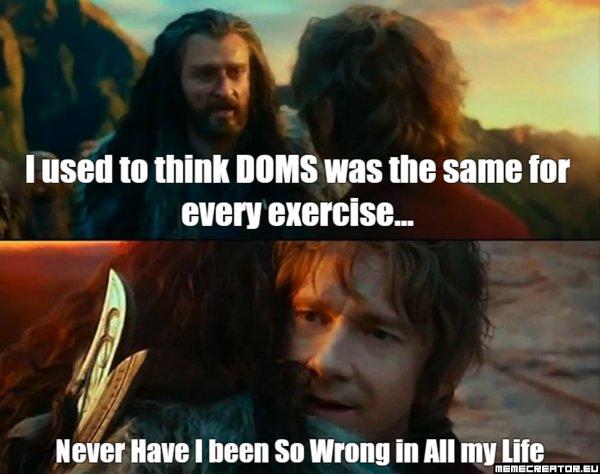
As we’re about to discuss in the application section – the focus of the Push Pull Legs Split, will be centred more around muscular damage and the accumulation of lactic acid – and less about neuromuscular demand (which would typically occur when lifting heavier, performing sprints and power based training.
Therefore, active recovery is a perfectly viable way of removing said lactic acid and aiding recovery – which as stated, is one of the biggest benefits of the Push Pull Legs Split.
After hammering your body on one day, during the recovery process you will enter the gym probably suffering a little bit from the session before. However, the session you’re about to perform should actually help your recovery without being too taxing.
This is because, when you contract your biceps (on your pull day), it doesn’t mean that the triceps just sits doing absolutely nothing. In this instance, the triceps will be taken into a mildly stretched position – which results in movement and helps to promote blood flow to the area.
Higher Training Intensities
As important as training volume is, training intensity is arguably more important for developing strength and muscle mass.
Training intensity, refers to the magnitude of a training stimulus, typically represented as a % of your 1 repetition max (1RM), RPE/10 etc. The closer you are to your maximal intensity, the greater the amount of stress placed on a system. The greater the stress placed on any of the bodily systems, the harder it is to recover from.
However, it’s important to be aware of the bodily system we’re providing overload to.
Many people think that because the muscles are sore after training, that it’s only the muscles that have to recover – in other words, once the pain is gone, you’re good to go again, right?
Wrong.
When lifting weights, particularly at higher intensities (i.e. +80%1RM), stress is placed on your endocrine system, your nervous system, connective tissue (e.g. tendons, ligaments) and even your bones.
Now, it’s important to be aware that each of these systems experience fatigue, just like the muscles do.
The difference, is that each of these systems recover at different rates; therefore not all recovery time is created equal.
Whilst some systems aren’t too much too worry about (e.g. the CNS), the endocrine system and connective tissue (not to mention your overall mental capacity is definitely something to consider).
It’s all about how you effectively manage your training intensity across exercises, loading schemes and from session to session. If this is done correctly – you’ll be able to train harder, for longer and more frequently – just like you can in “The Unshakable Strength Protocol”.
THE UNSHAKABLE STRENGTH PROTOCOL
Head here to gain access to our Brand New Training Program -
The Unshakable Strength Protocol
Harder vs. Longer…
Training at higher intensities has been shown, pretty much unanimously, to be superior for building strength compared to lower intensity alternatives (12, 13, 14, 15), regardless of the age, gender or training status of the test subjects.
The beauty of the Push Pull Legs training split, is that it allows for the higher intensities to be put to full effect – basically, you can train as hard as you want on that given day.
Don’t be Soft
Technique will always be integral, not only for success but for safety. And safety is always our number one focus when lifting. That’s not up for debate.
However, if you’re not careful, people run the risk of being so focused on everything being clean, crisp and precise in training that they simply become soft and refuse to push themselves.
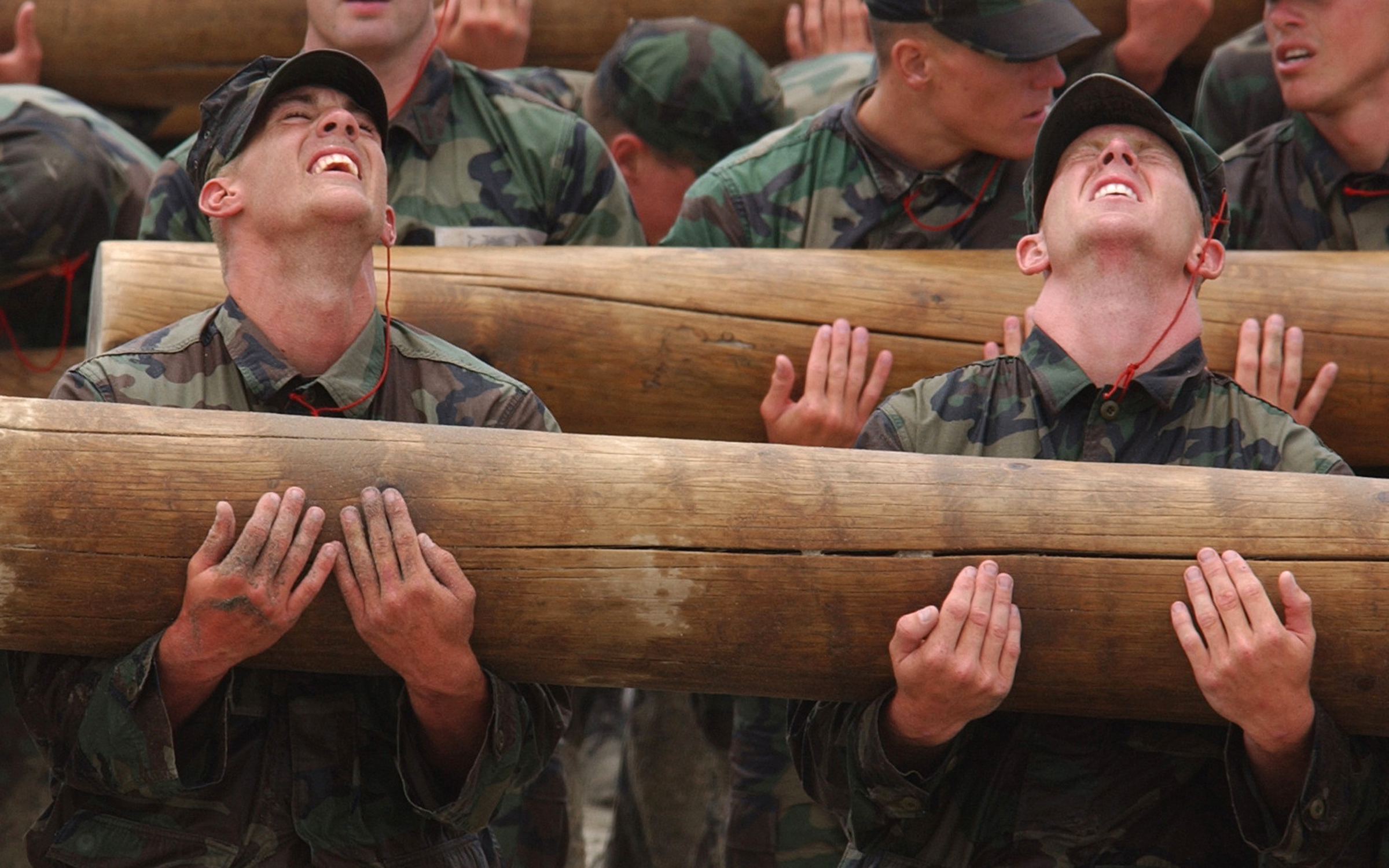
As with most things in life, the fear of failure becomes so great, that many people simply refuse to put themselves in the position to be successful. In training, they become so afraid of injury, that they hit a road block which they call “a plateau” which is simply – the fear of pushing harder.
Higher training volumes are great. Training more frequently is also beneficial.
But there reaches a time with many people where you simply have to work harder, to get more results.
Not dedicating more time. Not going to the gym more often – simply pushing yourself more when you’re in the thick of it.
You might surprise yourself with what you can achieve.
There reaches a time with many people where you simply have to work harder, to get more results. Not dedicating more time. Not going to the gym more often - simply pushing yourself more when you're in the thick of it.
Chapter Three – Writing the Plan
HOW?
Learn the implementation.
So, taking into account the pros and cons of the Push Pull Legs training split and understanding why it can be so effective, it’s time to dive into the application.
When constructing any training plan, we have to consider the interaction between:
- Frequency. How often you’re exposed to a stimulus within a given time frame (typically a week).
- Volume. How much of the stimulus you’re exposed to within a given time frame (typically calculated for each session or across a week).
- Intensity. The magnitude of the stimulus, based off your maximum output/tolerance (typically calculated as a percentage of your maximum/%1RM).
For the purposes of this training split, we will be assuming you’re training 3 days a week and focusing on hammering each area on the respective day. In other words, the frequency is actually relatively low.
Therefore, the training volume and intensity, must go up.
↑↑ TRAINING VOLUME ↑↑
↑↑ TRAINING INTENSITY ↑↑
↓↓ TRAINING FREQUENCY ↓↓
This means a fews things are going to happen:
- Get ready to be sore – The more within session volume you expose yourself to, the greater the chance you’re going to get pretty bad DOMS the following day.
- Fatigue breaks your technique – Working at a high intensity and training (close) to failure, means the extra fatigue you experience is going to result in your movement technique breaking down.
- Make sure your conditioning is up – unless you plan on spending 2-3 hours in the gym, you’re going to have work at a pretty fast rate throughout the course of the session to make sure you get in the necessary volume. This means limiting your rest times, supersetting exercises and not messing around on your phone whilst pedalling on the exercise bike.
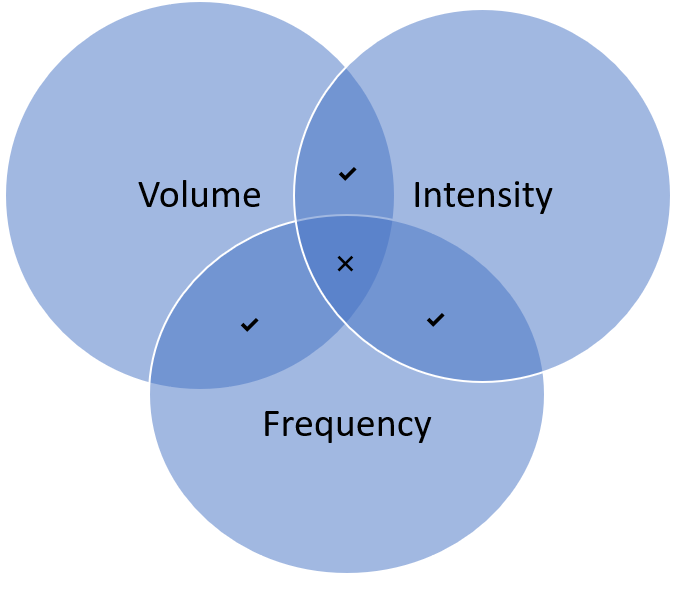
Programming Safely and Effectively
Keeping the above in mind, the following training variables are influenced:
- Number of compound vs Isolation Exercises
- Relative Intensity (i.e. %1RM)
- Complexity of the Exercise
- Time under Tension
Compound vs. Isolation
It’s often said the compound exercises trump isolation exercises every time when it comes to building strength and it’s no different in this scenario.
In fact, there is even more of a rationale to use compound exercises when doing Push Pull Legs, due to the lack of frequency.
Having said that, it’s important to recognise that there are only so many compound exercises you can perform within a training session before your injury risk starts to climb exponentially – not to mention you limit the stress you can place on one muscle, due to the fatigue caused by another.
Mechanical Demand
Based off the recognition that fatigue is going to be higher than usual within the session, mechanical demand becomes important in order to reduce the risk of injury. Mechanical demand refers to how much mechanical stress is placed on the body.
This is a combination of the following factors:
- Spinal Loading
- Joint Range of Motion
- Weight Lifted
- Stability Required
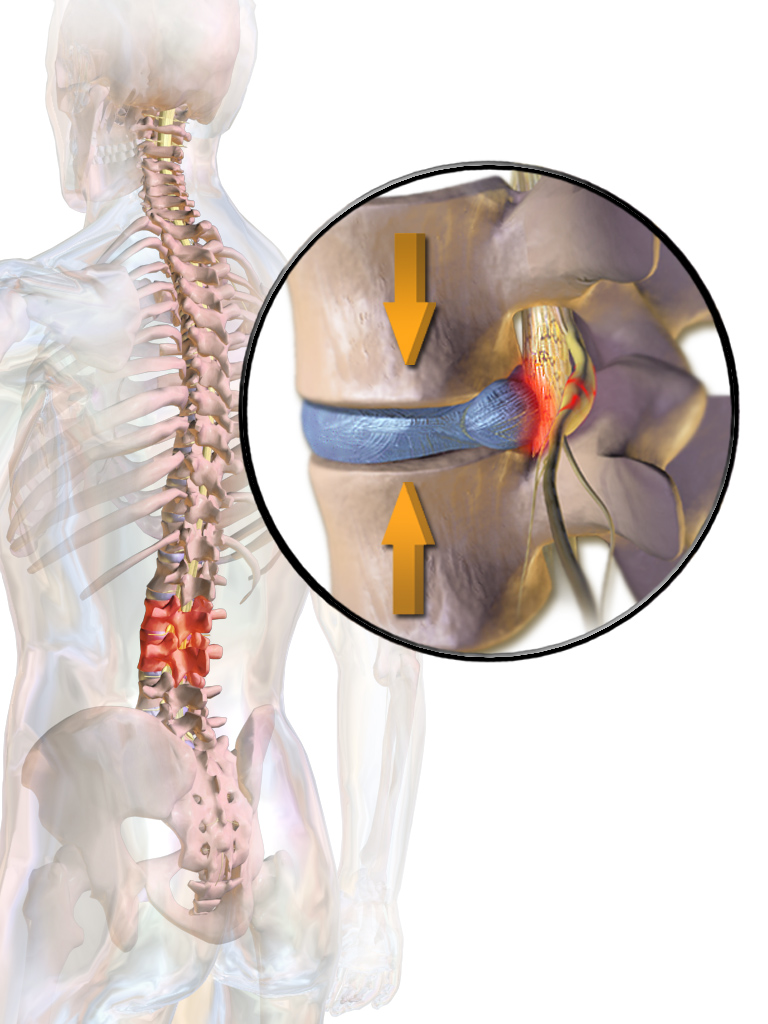
As the session goes on, we want the exercises to progressively decrease in mechanical demand, whilst remaining as “compound” in nature as possible, before adding in isolation exercises.
For example…
Order | Exercise | Mechanical Stress Variable |
|---|---|---|
1 | Back Squat | ↑ Spinal Loading ↑ Lots of Weight ↑ R.O.M ↑ Stability |
2 | Romanian Deadlift | ↑ Spinal Loading ↓ Weight ↑ R.O.M ↓ Stability |
3 | Leg Press | ↓ Spinal Loading ↑ Weight ↓ R.O.M ↓ Stability |
4 | Leg Extensions/Leg Curls | ↓ Spinal Loading ↓ Weight ↓ R.O.M ↓ Stability |
Relative Intensity
Your relative intensity can and should be slightly higher. Now, relative intensity not only means more weight, but also closer to failure.
That doesn’t mean go crazy and hurt yourself.
I’m still not convinced that training to absolute failure is necessary for muscle growth, and certainly isn’t needed for the Push Pull Legs Split. However, you want to get closer to the edge than you would do with an alternative training plan.
Remember, the program is structured to have a lower frequency and provide you with ample time to recover.
So, push the boat out a little and get a bit crazy.
Time Under Tension
The final variable I think is worth talking about with the Push Pull Legs split is time under tension (TUT). When it comes to muscle growth, we’re all aware that training volume is the number one variable that influences muscle growth (9).
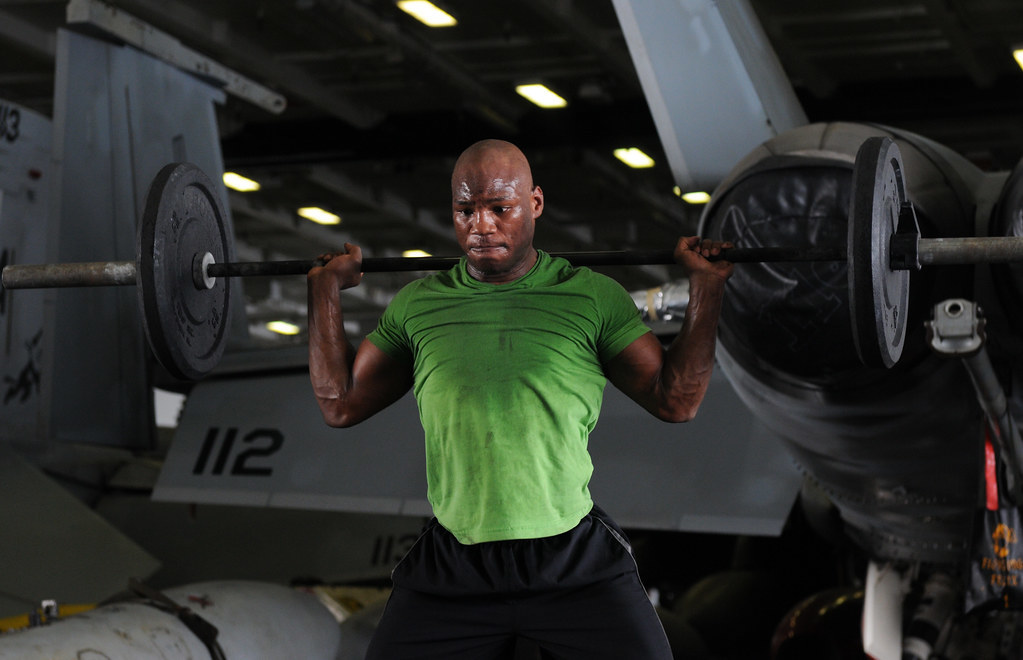
However, training volume is actually a “catch all” term for a few different methods of quantifying the amount of time the muscle spends under tension.
Some use: Sets x Reps x Load.
Others use: Overloading Reps x Load.
Others use: RPE x Reps.
There’s even more picky scientists tracking the total impulse (Force x time) applied over a given session.
All in all, they all aim to accurately quantify one thing:
Time under tension.
Now, it’s not uncommon to see people (particularly those in the “balls out” mindset), smashing reps out as fast as possible in a bid to build up as much lactic acid as possible and really “feel the burn”.
In addition to the session laid out above, running the Push Pull Legs split as your training routine should also include some note to the tempo you use. Remember, if you’re only training an area of your body once in a given week, you better be sure you get the most out of it.
As a result, the above session should look something like the following:
Order | Exercise | Training Tempo | Mechanical Stress Variable |
|---|---|---|---|
1 | Back Squat | N/A | ↑ Spinal Loading ↑ Lots of Weight ↑ R.O.M ↑ Stability |
2 | Romanian Deadlift | 3 sec eccentric; 1 sec concentric | ↑ Spinal Loading ↓ Weight ↑ R.O.M ↓ Stability |
3 | Leg Press | 5 sec eccentric; 2 sec pause, 1 sec concentric | ↓ Spinal Loading ↑ Weight ↓ R.O.M ↓ Stability |
4 | Leg Extensions/Leg Curls | 3 sec eccentric; 2 sec pause, 3 sec concentric | ↓ Spinal Loading ↓ Weight ↓ R.O.M ↓ Stability |
Final Thoughts
Remember, none of the variables in the table above are set in stone, they simply reflect the concepts that allow you to tailor the Push Pull Legs split to truly maximise the results you can gain from this form of training.

References
- Armstrong, R. B. (1984). Mechanisms of exercise-induced delayed onset muscular soreness: a brief review. Medicine and science in sports and exercise, 16(6), 529-538
- Belcastro, A. N., & Bonen, A. (1975). Lactic acid removal rates during controlled and uncontrolled recovery exercise. Journal of applied physiology, 39(6), 932-936
- Friden, J., Kjörell, U., & Thornell, L. E. (1984). Delayed muscle soreness and cytoskeletal alterations: an immunocytological study in man. International journal of sports medicine, 5(01), 15-18
- Gill, N. D., Beaven, C. M., & Cook, C. (2006). Effectiveness of post-match recovery strategies in rugby players. British journal of sports medicine, 40(3), 260-263
- Gulick, D. T., & Kimura, I. F. (1996). Delayed onset muscle soreness: what is it and how do we treat it?. Journal of Sport Rehabilitation, 5(3), 234-243
- Häkkinen, K., & Kallinen, M. (1994). Distribution of strength training volume into one or two daily sessions and neuromuscular adaptations in female athletes.Electromyography and clinical neurophysiology, 34(2), 117-124
- Hough, T. (1902). Ergographic studies in muscular soreness. American Physical Education Review, 7(1), 1-17
- Judge, L. W., & Burke, J. R. (2010). The effect of recovery time on strength performance following a high intensity bench press workout in males and females.International journal of sports physiology and performance, 5, 184-196
- Martineau, L. C., & Gardiner, P. F. (2002). Skeletal muscle is sensitive to the tension–time integral but not to the rate of change of tension, as assessed by mechanically induced signaling. Journal of biomechanics, 35(5), 657-663
- Monedero, J., & Donne, B. (2000). Effect of recovery interventions on lactate removal and subsequent performance. International journal of sports medicine, 21(08), 593-597
- Newham, D. J., Jones, D. A., & Edwards, R. H. T. (1983). Large delayed plasma creatine kinase changes after stepping exercise. Muscle & Nerve: Official Journal of the American Association of Electrodiagnostic Medicine, 6(5), 380-385
- Peterson, M. D., Rhea, M. R., & Alvar, B. A. (2004). Maximizing strength development in athletes: a meta-analysis to determine the dose-response relationship. The Journal of Strength & Conditioning Research, 18(2), 377-382.
- Peterson, M. D., Rhea, M. R., & Alvar, B. A. (2005). Applications of the dose-response for muscular strength development: a review of meta-analytic efficacy and reliability for designing training prescription. Journal of strength and conditioning research/National Strength & Conditioning Association, 19(4), 950-958.
- Rhea, M. R., Alvar, B. A., Burkett, L. N., & Ball, S. D. (2003). A meta-analysis to determine the dose response for strength development. Medicine and science in sports and exercise, 35(3), 456-464.
- Schoenfeld, B. J., Peterson, M. D., Ogborn, D., Contreras, B., & Sonmez, G. T. (2015). Effects of low-vs. high-load resistance training on muscle strength and hypertrophy in well-trained men. The Journal of Strength & Conditioning Research, 29(10), 2954-2963
- Watts, P. B., Daggett, M., Gallagher, P., & Wilkins, B. (2000). Metabolic response during sport rock climbing and the effects of active versus passive recovery. International journal of sports medicine, 21(03), 185-190


